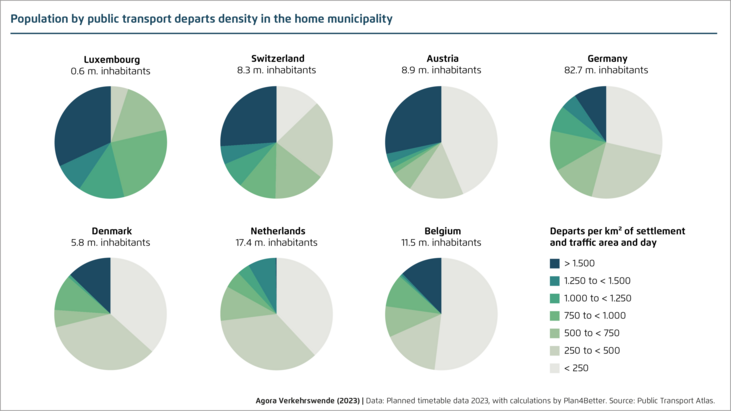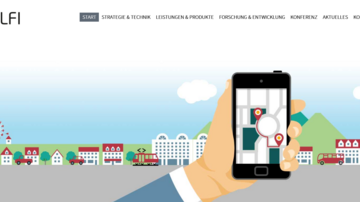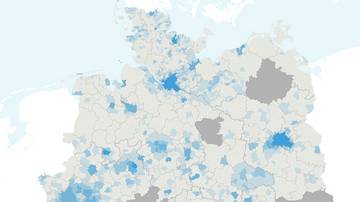- Share on Facebook
- Share on Twitter
- Share by Email
The Public Transport Atlas by Agora Verkehrswende illustrates how often a bus or train departs - in relation to the area, as the frequency of journeys is a crucial factor for how often people use public transport. The darker the colour on the maps, the higher the frequency of journeys and the better the offering.
To ensure that the information on journey frequency is not distorted by forests, agricultural land, or lakes, all departures or arrivals within a municipality were allocated to its settlement and traffic area. This is represented by the category "departs per built-up area“.
Germany needs a committed debate about expansion and quality objectives for public transport. The Public Transport Atlas provides a basis for this debate, with factual and easy-to-understand information. For this, the current timetable data of almost all transport companies in Germany, as well as Switzerland, Austria, Luxembourg, Belgium, the Netherlands, and Denmark were evaluated.
In the comparison of the countries studied, the small principality of Luxembourg clearly leads. Despite a rather small-town spatial structure, public transport here operates comprehensively in a dense schedule and has been - although this is not included in the present evaluation - free of charge for passengers since 2020. In Switzerland and Austria, the public transport offering is better for most people than in Germany, although in Austria there is a strong gradient between very well and poorly connected areas. For people in Belgium and Denmark, the bus and train offering appears similarly extensive as in Germany. In the bicycle-friendly Netherlands, public transport connections are often worse than in Germany.

One-third of the people in Germany (27 million) live in municipalities with a good public transport offering, i.e., more than 750 departures per day per square kilometre. However, 29 percent of the people (24 million) live in municipalities with less than 250 departures per day. In these municipalities, people rely on their own car or the school bus.



